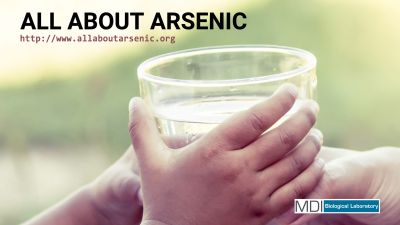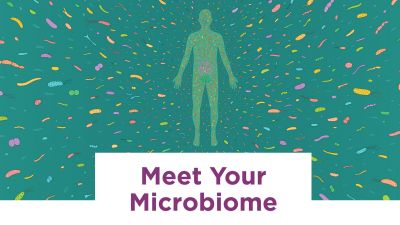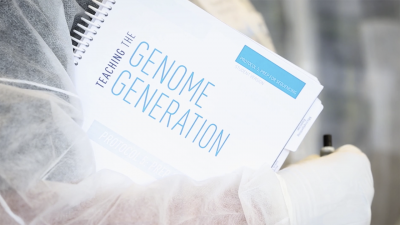Health and Biomedical Science for a Diverse Community (Phase I)
-
Project Description
A. To increase interest and achievement in biomedical science among 4th and 5th graders from underrepresented minorities; B. To enable 4th and 5th grade under-represented minority students to envision themselves as future healthcare providers and biomedical science researchers; C. To promote family health by providing teachers students and families with strategies for preventing diseases to which minorities are particularly prone. Approaches include: (1) Development of a health and biomedical science curriculum for 4th and 5th grade: eight five-lesson instructional units four units for 4th grade and four for 5th. Students learn scientific concepts and practice investigative skills while studying diseases and health conditions that predominantly affect minorities. (2) Workshops for teachers at the Hall of Health Museum CHORI and school sites to familiarize teachers with the curriculum introduce them to cutting-edge biomedical research and help them to incorporate biomedical science across the curriculum. (3) Family Science Nights and Science Festivals to increase families- knowledge of health conditions and biomedical science and to enable students and parents to learn together. (4) Providing students with high school college and professional role models from diverse ethnic groups. (5) Interactive exhibit on social and genetic factors in health.
-
Abstract
Children’s Hospital Oakland Research Institute (CHORI) in collaboration with the Hall of Health a hands-on health museum proposes a three-year Phase I SEPA project entitled “Health and Biomedical Science for a Diverse Community.” The project entails development of a novel interactive biomedical science curriculum for 4th and 5th grade students in low socioeconomic environments. Complementary to the curriculum a hands-on exhibit on social and genetic factors in health will be developed to enhance learning by students and families. The curriculum and exhibit will be pilot tested with students from two elementary schools in Oakland California. The curriculum – which will specifically address minority health issues such as asthma obesity diabetes and heart disease – will include four five-lesson instructional units for 4th grade and four five-lesson instructional units for 5th grade. In addition to classroom activities the project will include workshops for teachers family health and biomedical science nights field trips to the Hall of Health and an annual health and biomedical science festival for families. The project will involve clinical as well as basic science investigators patients and families and high school and college students. It will draw on the talents of teachers and health educators from the Oakland Unified School District directors of SEPA projects at the Exploratorium in San Francisco and Lawrence Hall of Science in Berkeley faculty at San Francisco State University and the University of California at Berkeley and employees of LeapFrog Inc. a company located in Emeryville California that makes interactive educational products. The ultimate goals of the project are to make science interesting and relevant to children who come from ethnically diverse low socio-economic environments to help them and their parents understand the relationship between science and health and to foster their interest in science so that they may consder future opportunities in careers related to biomedical science. All project activities will undergo front-end formative and summative evaluation.
-
Dissemination Strategies
1. Posting lessons on the Internet (expected completion by June 2007). 2. Now writing Phase II SEPA proposal to provide for production of curriculum kits for dissemination to all of the elementary schools in the Oakland Unified School District California and training parents and teachers to use them. 3. Phase II SEPA proposal to include workshops for teachers and parents from other districts. 4. Phase II SEPA proposal to include traveling version of exhibit.
-
Project Evaluation(s)
Evaluation Goals – 1. To assess how well the Project achieved its overall aims for implementation. 2. To assess how well students learn and understand project content and whether they report changes in their health-related behaviors. 3. To assess changes in students’ attitudes toward science. 4. To assess how much participants enjoy project activities. Evaluation Design – 1. Front-end evaluation of each curriculum unit and the exhibit to assess participants’ current knowledge their interests and gaps in knowledge. 2. Formative evaluation of each project element to assess fidelity of implementation to design and make improvements based on participant feedback. 3. Summative evaluation to assess impact of the curriculum. A comparison group of demographically matched students in the OUSD will be used to determine whether statistically significant changes have taken place in the comparison and experimental groups. Instruments Used and Data Collection – A. Qualitative reflection forms for project participants ‘ students teachers presenters adults/parents; the reflection forms include rating scales for gauging satisfaction and overall impressions. B. Quantitative assessments for students ‘ locally designed Pre/Posttests of Lesson Content and Modified Attitudes Toward Science Inventory administered pre/post. Types of Data Collected – 1. Front-end evaluation of each unit 2. Reflection forms from teachers and presenters 3. Student focus groups and student reflection forms during the pilot phase 4. Evaluator observations of lesson pilots 5. Pre/posttests for each unit 6. Pre/posttests for the Modified Attitudes Toward Science Inventory (ATSI) 7. District test scores for experimental and comparison groups (2006-07 school year) 8. Teacher Workshops Family Science Nights Family Festivals field trips exhibit 9. Reflection forms from teachers presenters adults/parents/guardians 10. Student focus groups and student reflection forms 11. Drop-in visitor survey and front-end evaluation (exhibit) 12. Evaluator observations. Results of Data Analysis (full evaluation reports for Year 1 and Year 2 are available) – 1. Each element of the Project has been designed and implemented. 2. Student’s mean scores on the Unit tests increased by posttesting with statistically significant changes on some individual items and some composites. 3. Participants expressed a more favorable attitude towards science teachers. 4. Participants consistently give Project activities high ratings for enjoyment and satisfaction.
-
Resources for Sharing
1. Lesson plans for eight instructional units for 4th and 5th grade (topics listed above). 2. Evaluation tools.
Project Audience
Ethnically diverse 4th and 5th grade students and their teachers and parents
Subjects Addressed
(1) obesity and nutrition; (2) diabetes and nutrition digestive system; (3) traumatic brain injuries nervous system; (4) infectious diseases; (5) environmental toxics and poisoning prevention; (6) asthma lung disease respiratory system; (7) genetics and sickle cell anemia; (8) heart disease circulatory system.
Associated SEPA Project(s)
-
Health and Biomedical Science for a Diverse Community (Phase II)
R25RR020449-2 : 08/01/2007 - 07/31/2009
Associated SEPA Publication(s)
-
Teaching about Genetics and Sickle Cell Disease in Fifth Grade
J Natl Med Assoc.
Day LL, Murray E, Treadwell MJ, Lubin BH






